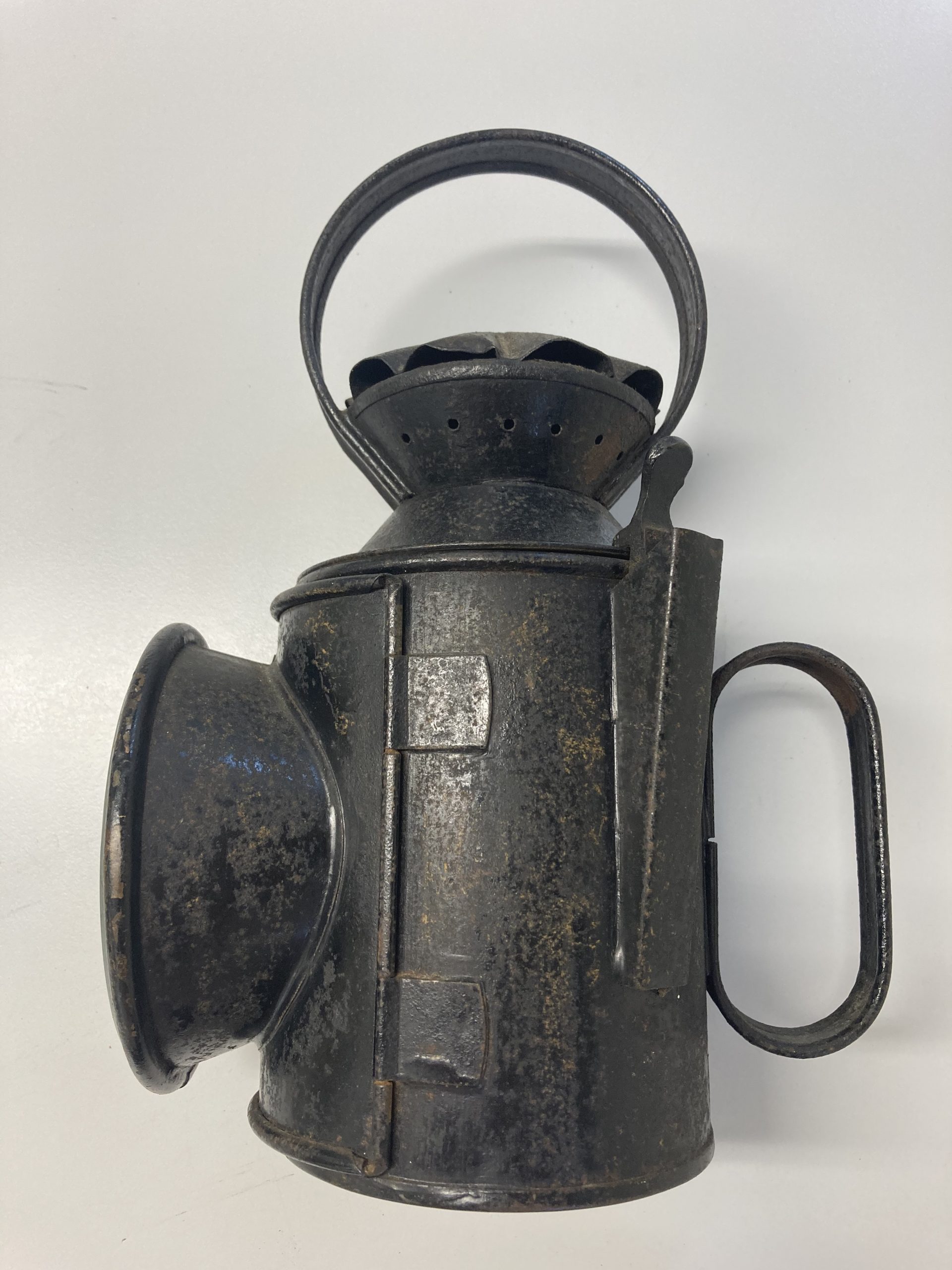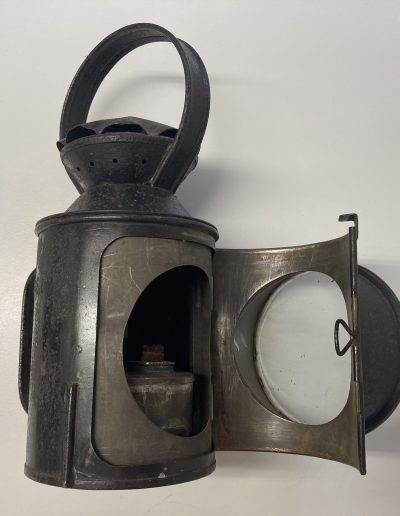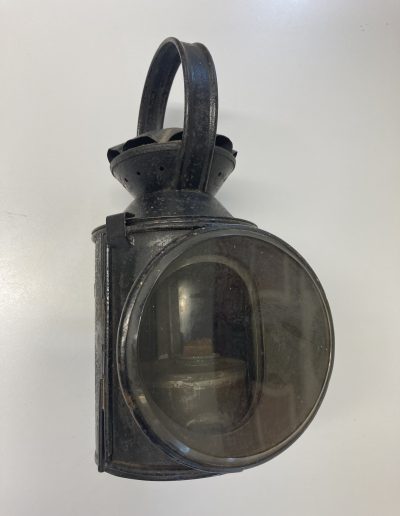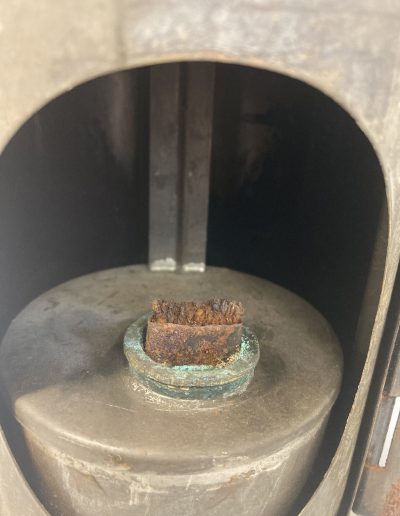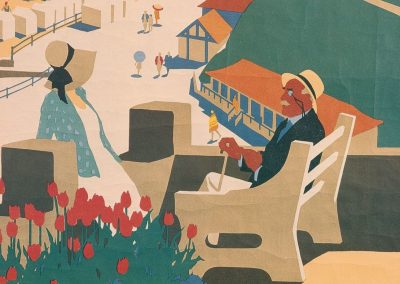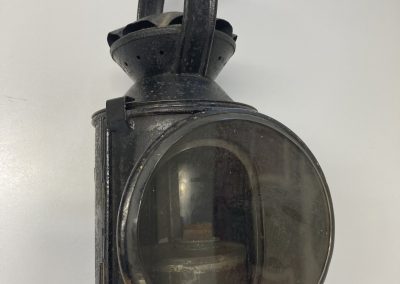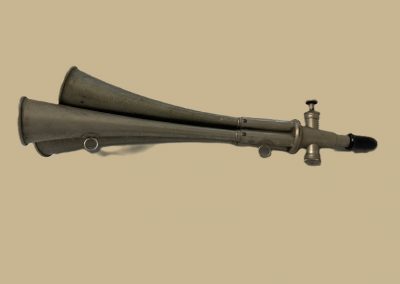Three Aspect Handlamp
North Yorkshire Moors Railway
This railwayman’s handlamp is from the first half of the 20th century, although lamps like these had been used during the Victorian era. Stations and trains didn’t get electric lighting until the early 20th century so railways were very dark and dangerous places.
A railwayman would need to hold the lamp in front of him the same way we might use a torch or the light on a mobile phone to see where we’re going.
Lamps would also be used by train guards in the hours of darkness to signal to the driver to proceed or continue to be stationary. During daylight hours, they would use red and green flags for this instead.
This type of lamp is called a 3-aspect hand lamp because it has 3 ‘aspects’ or ways to communicate. Red means ‘stop’, blue means ‘all clear’, and the option without colour allows it to be used like a torch.
The lamp is embossed (stamped) with the letters LNER, which tells us that it was made for the London & North Eastern Railway between 1923 and 1947.
Watch the Video
Watch The Video With Subtitles
Talking Points
Do you think the lamp would have felt light or heavy to carry?
Do you think it would have been easy to send signals with the lamp?
Have you ever tried sending signals with a torch? Did you find it easy? What messages did you send?
When was the last time you used a torch?
When was the last time you were out at night in the dark? Were there any other lights around?
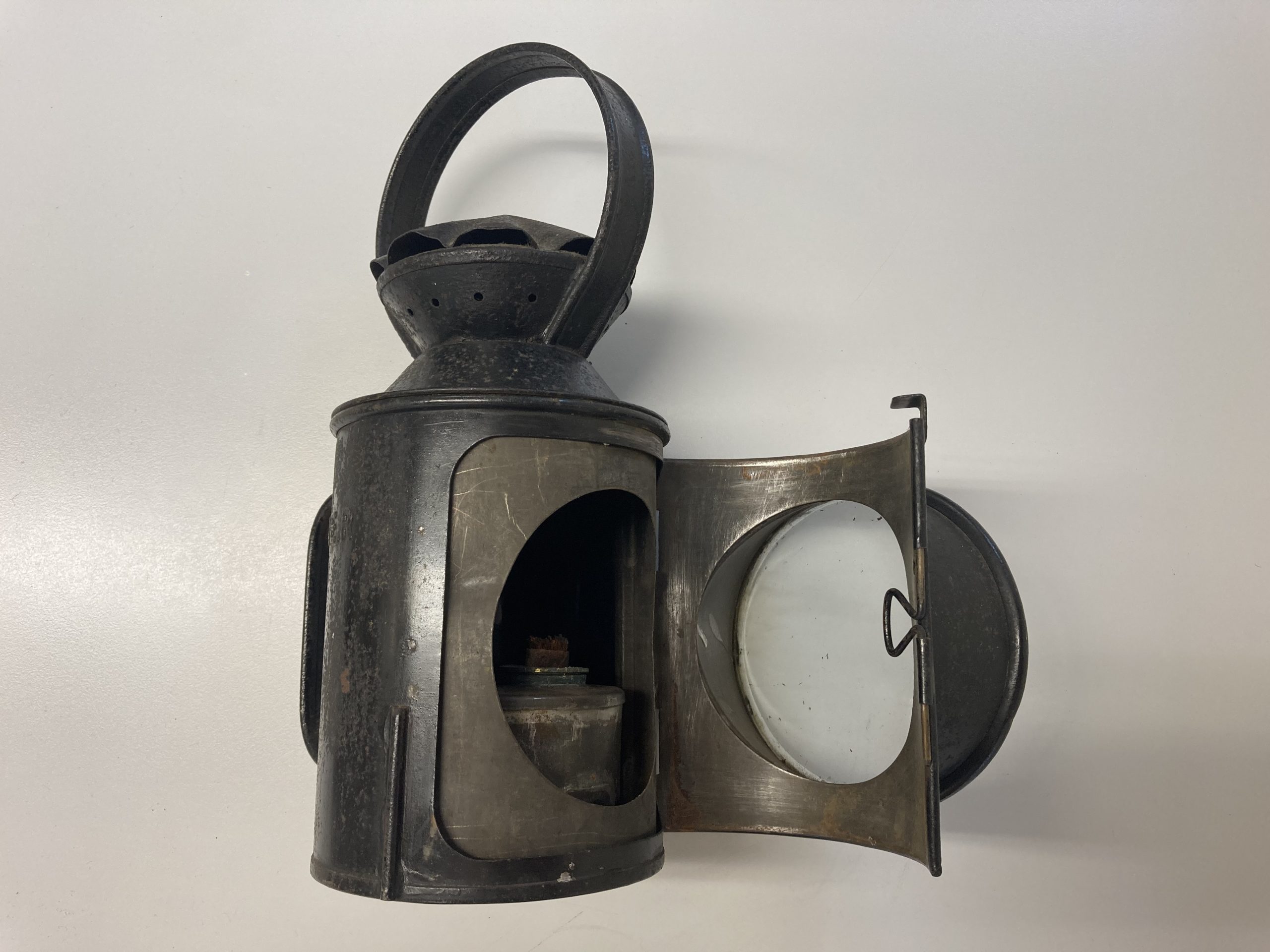
Hands on History
You can take part in a range of activities designed for schools by the North Yorkshire Moors Railway, including a trip on the train!
Museum Location
Find more objects from the North Yorkshire Moors Railway

